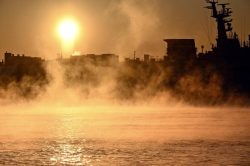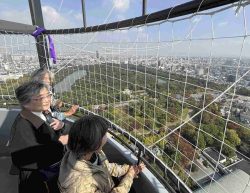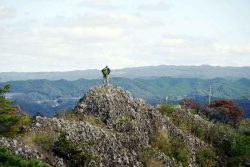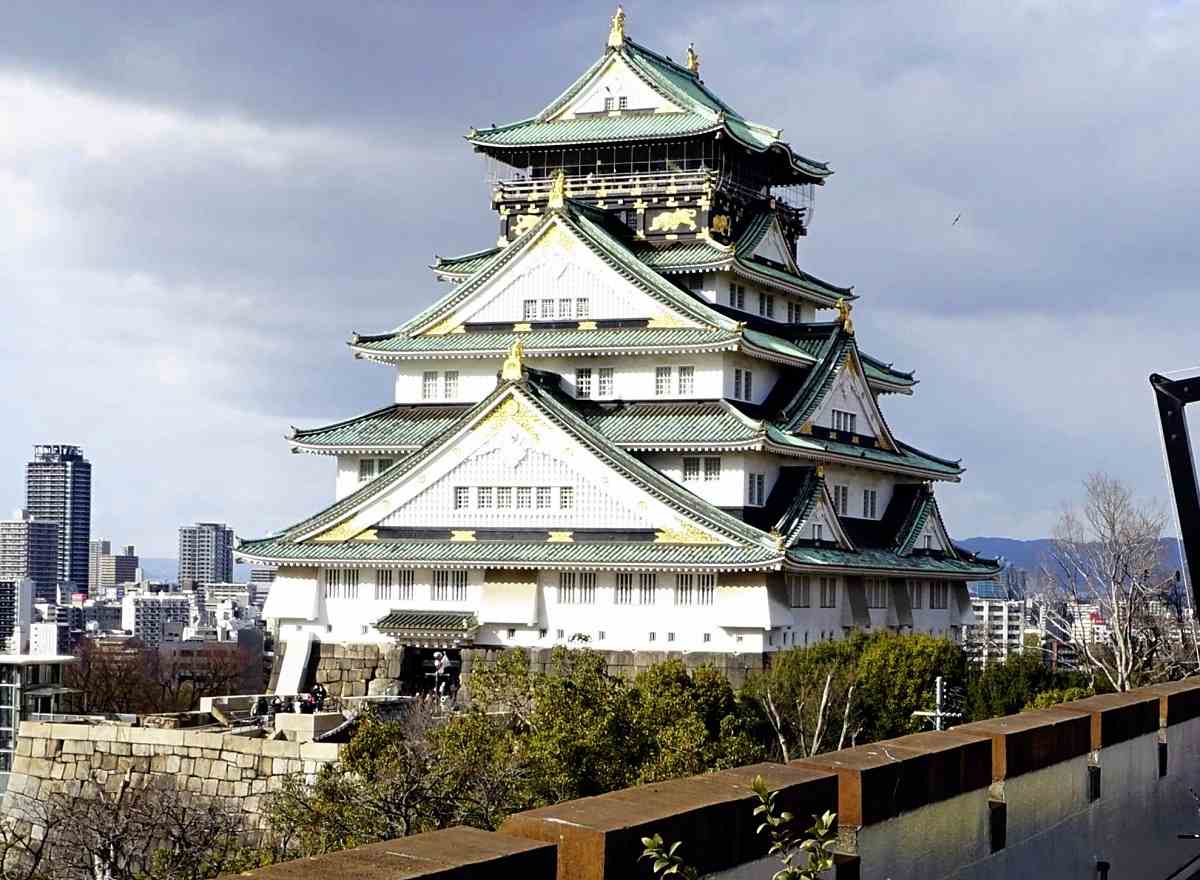
The Osaka Castle tower
2:00 JST, March 13, 2023
OSAKA — Ask a child, “Who built Osaka Castle?” and the answer you’ll probably get is, “Carpenters!” Yet people who know their history are just as likely to say “Toyotomi Hideyoshi.” Turns out, both answers are correct.
Hideyoshi was a powerful warlord who unified Japan in the late 16th century before the establishment of the Tokugawa shogunate. He is especially popular in Osaka as a historical figure who rose to power from a peasant background.
However, when it comes to the current Osaka Castle tower that has been transformed into a modern museum with the appearance of a keep, the “carpenters” answer to the riddle is still correct. The castle tower was built by major construction company Obayashi Corp.
The eight-story structure with reinforced concrete was built in 1931 as part of a project to commemorate the accession of Emperor Showa to the throne five years earlier. Since then, it has served as a landmark as well as a symbol of Osaka for more than 90 years.
1st concrete castle
Photographs in the museum’s collection show steel frames for the castle being assembled gradually. Concrete castle towers are now ubiquitous, but Osaka Castle was the first to have such a structure.
In the Meiji era (1868-1912), Osaka City started seeing its population increase and expanded its city boundaries due to industrial development, particularly in the textile sector. In 1925, it became the largest city in Japan in terms of both area and population.
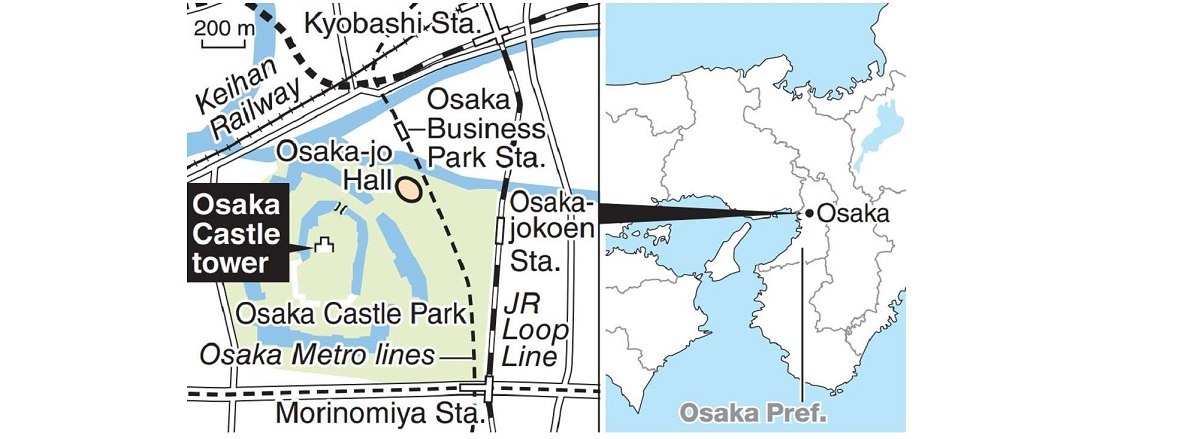
Then Mayor Hajime Seki proposed the reconstruction of the castle tower, saying that the city needed a landmark and a symbol that can be a source of comfort to residents. Seki led the city’s urban planning efforts, including the expansion of the Midosuji area, and aimed to make the castle tower a “permanent structure that brings together the latest technology.”
Although the project was ambitious, it initially fell short of funding, even though donations from residents were used for construction costs.
Given the situation, Obayashi, which had its headquarters in Osaka at that time, agreed to build the tower at a relatively low cost, according to the company’s website. The company’s leadership at the time is said to have determined to undertake the project with its president saying: “This is a major project involving residents of Osaka. If no one in Osaka takes on the project, no one else will.”
The donations eventually reached the project’s funding target after the castle tower was completed. But the president’s remark shows the spirit of Osaka merchants.
The castle tower was not “restored,” but rather “reconstructed” in a way that kept up with the times, by taking such steps as using concrete. The current castle also serves as a museum that showcases all aspects of local history.
Installation of elevators
The exterior of the current castle tower was designed to meticulously reproduce the castle style in the Hideyoshi era using as a reference a folding screen that illustrates the Summer War in Osaka and has been designated as a national important cultural property.
Blueprints that remain in existence indicate that the architects made detailed revisions even after construction began.
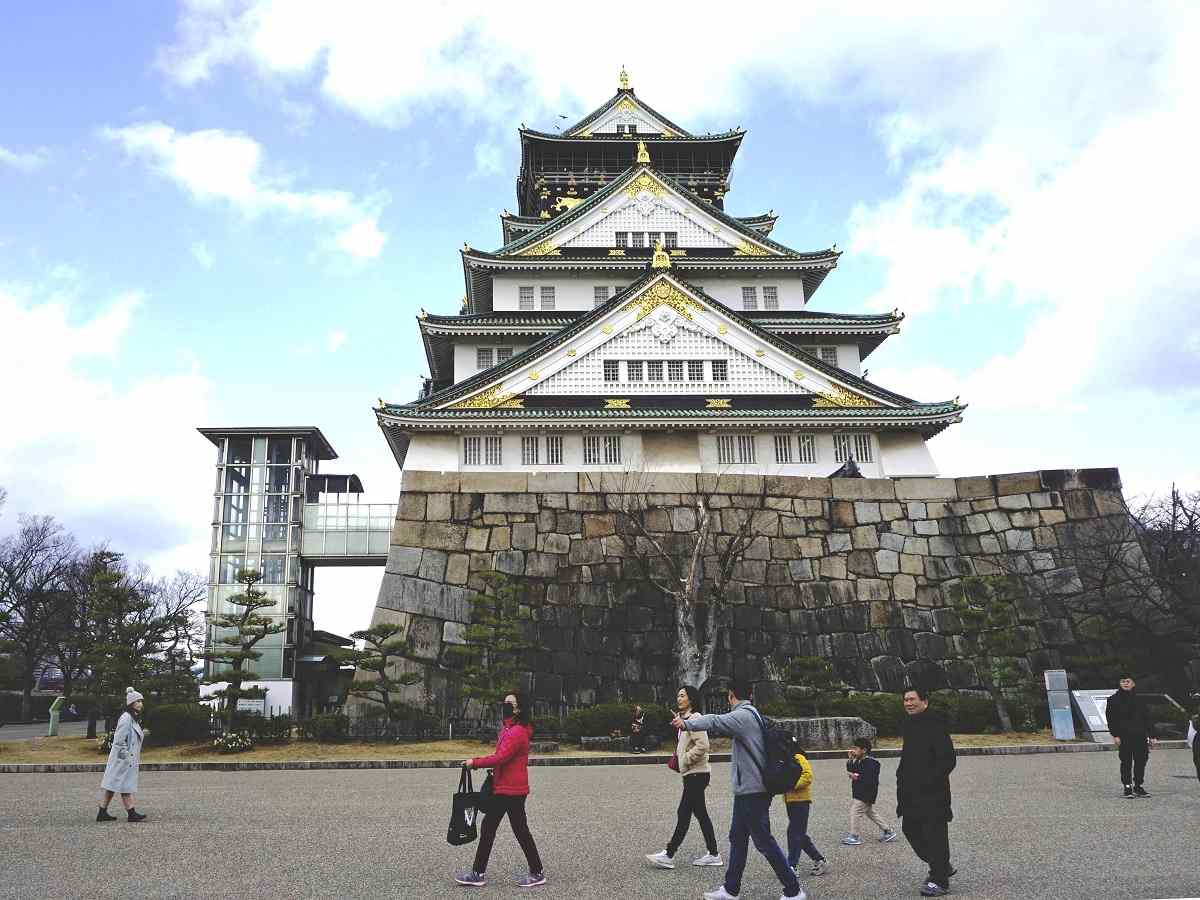
The Osaka Castle tower is seen with an external elevator installed at left. Elevators allow visitors to access to the observation deck on the eighth floor.
Another feature of the castle tower is that two elevators were installed to keep up with the times, and the stairs were divided into two sections, one for ascending and the other for descending, in order to manage crowds of visitors. The elevators at that time had a load capacity of about 1 ton. They moved about 45 meters per minute; in other words, 30 seconds to travel the 20 meters from the first to fifth floors.
As the castle was rebuilt as part of a project to commemorate the enthronement of Emperor Showa, he visited there in 1932, the year after its completion. The records of the city government state that Emperor Showa used the elevator on the south side to go up to the fifth floor and then took stairs to the observation deck on the eighth floor, from which he viewed the Osaka Plain. This is believed to be the first time for an emperor to use an elevator.
From 1995 to 1997, the castle tower underwent a major renovation to enable the elevator on the south side to operate up to the eighth floor. In addition, an external elevator was also set up to allow visitors to directly gain access to the entrance of the castle tower built on the stone walls. This elevator allows wheelchair users to visit the observation deck.
The external elevator has a modern design with glass walls. “We chose this design to clearly indicate that this facility was built in a different period than that when stone walls were used,” said Yuji Miyamoto, director of the Osaka Castle Museum.
Love for Hideyoshi
What people call Osaka Castle now is the third-generation castle tower.
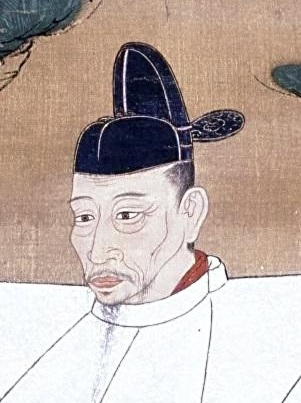
A portrait of Toyotomi Hideyoshi
After the death of Toyotomi Hideyoshi, power shifted to Tokugawa Ieyasu, who founded the Tokugawa shogunate. The first-generation Osaka Castle was attacked by Ieyasu and engulfed in flames in 1615, being reduced to ashes only about 30 years after its construction.
After that, the Tokugawa clan rebuilt the castle. Even though a keep was lost to a lightning strike in 1665, the second-generation Osaka Castle was affectionally called by local people as “Mr. Taiko’s castle.” Taiko is a title for retired regent that came to generally refer to Hideyoshi.
According to Yuji Miyamoto, director of the Osaka Castle Museum, people in Osaka have always regarded the castle as Hideyoshi’s, even though it was rebuilt by the Tokugawa shogunate, which issued an order to mobilize a number of feudal lords to that end.
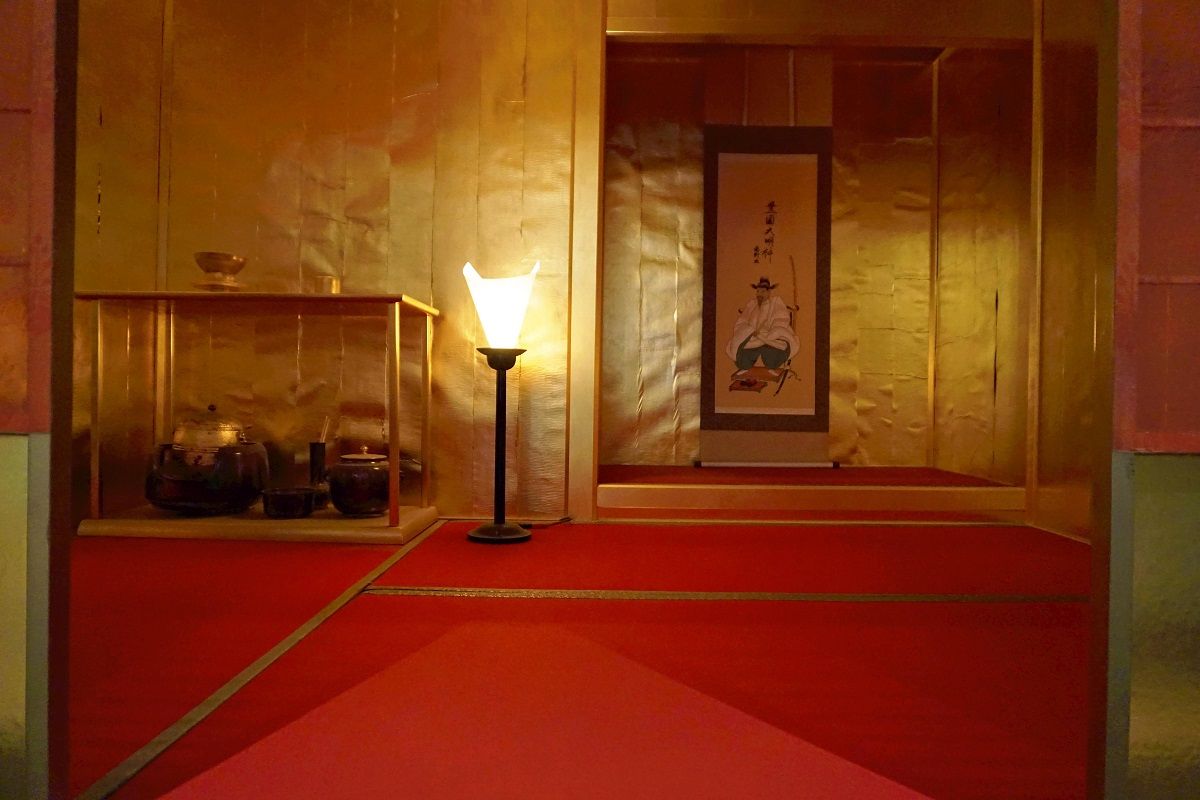
A replica of the Golden Tea Room, which Hideyoshi loved, is displayed on the third floor.
For many years, it was believed that the Tokugawa clan had restored it on the basis of the Osaka Castle originally built by Hideyoshi. In 1959, however, stone walls of the original Osaka Castle were discovered underground during a drilling survey. This suggests that the Tokugawa clan buried the burned castle and built a new castle from scratch.
Excavation work is still underway to identify stone walls buried deep underground, and a facility is currently being constructed to display these walls.
"Features" POPULAR ARTICLE
-

Sanrio to Open Museum in Yamanashi Pref. Dedicated to Founder, Exhibits Include Hello Kitty, Other Characters
-
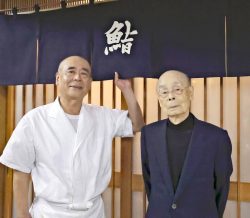
Legendary Sushi Chef Jiro Ono Turns 100: ‘I Have No Regrets’
-

Autumn Foliage Surrounds Visitors to Tokyo’s Showa Kinen Park
-

My Daughter No Longer Speaks to Me, But I Want to See Her and My Grandchild
-

Kumamoto: Public Bath Refurbished as Library Where You Can Chat, Take Photos
JN ACCESS RANKING
-

Keidanren Chairman Yoshinobu Tsutsui Visits Kashiwazaki-Kariwa Nuclear Power Plant; Inspects New Emergency Safety System
-

Imports of Rare Earths from China Facing Delays, May Be Caused by Deterioration of Japan-China Relations
-

University of Tokyo Professor Discusses Japanese Economic Security in Interview Ahead of Forum
-

Japan Pulls out of Vietnam Nuclear Project, Complicating Hanoi’s Power Plans
-

Govt Aims to Expand NISA Program Lineup, Abolish Age Restriction


